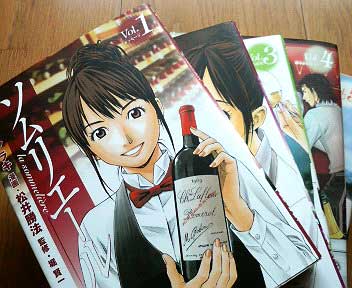Burgundy - the most vital facts -
- In French it’s Bourgogne
- Stable and cool weather since it’s inland. Pinot Noir likes cool weather.
- While Bordeaux is predominantly reds, Burgundy does both reds and whites
- No blending
- Reds = Pinot Noir (with some Gamay)
- Whites = Chardonnay (with some Aligote)
- The bottle has sloped shoulders
- The reds are delicate, fruity, floral, acidic, and lighter in color that Bordeaux’s
- So don’t decanter
- Four general sections: Chablis, Cote d’Or, Cote Chalonnaise and Maconnais. Beaujolais is sometimes included into Burgundy, sometimes it’s left separate. I'm keeping it separate for now.
- Soil is limestone based (whites) or marl based (reds) - marl is limestone and clay
- Appellations are based on the four ranking types. They are named for the vineyard, the village, or the overall region.
- Rankings are based on vineyards, not the individual Domaine.
- Labels indicate the appellation but also whether if the wine is a monopole (an appellation owned by a single winery or domaine)
- Domaine = Burgundy (Chateau = Bordeaux)
- Notable Vintages (years) - 1999 & 2002 (best), 1996 (pretty good), 1992 (solid), 1998 & 2000 & 2003 (good)
Here we go with more detail:
Burgundy wines have four rankings. Remember, they are based on the vineyards, not the Domaine that bottles the wine.
Grand Cru - about 2% of the total production of Burgundy wines, from the best vineyards. Appellations are only associated with the vineyard’s name, not the winery. Age 5-7 years.
Premier Cru - about 10 %. Still good, and still from specific vineyards. Appellations are associated with the village, but there are 562 premier grand cru vineyards in the region. Age 2-5 years.
Village - these use a blend of grapes from one of the 42 villages in Burgundy. 44 village appellations. Age 2-4 years.
Region - wines blended from all across Burgundy. 23 regional appellations. Mostly for immediate consumption.
 The four general regions of Burgundy:
The four general regions of Burgundy:Chablis - This is the land of the Chardonnay. There is only one grand cru vineyard in Chablis, but it looks like there are seven. Confusing right? It’s because each is from a different climat, or section of the grand cru vineyard. Therefore, the famous names you see will be Chablis Les Blanchots, Chablis Les Clos, Chablis Valmur, Chablis Grenouilles, Chablis Vaudesir, Chablis Les Preuses, and Chablis Bougros. Hopefully that made sense.
Cote d’Or - The general section of Cote d’Or is broken up into two sub sections: Cotes de Nuits and Cotes de Beaune. 2/3 of all grand cru vineyards are in Cotes de Nuits.
Cotes de Nuits Notable Towns (8 total)
- Pretty much all reds
- Gevrey-Chambertin (9 grand crus)
- Morey-Saint-Denis (4 grand crus)
- Chambolle-Musigny (2 grand crus--Musigny and Bonnes-Mares)
- Vougeot (1 large grand crus--Clos de Vougeut)
- Vosne-Romanee (6 grand crus)
- Flagey-Echezeaux (2 grand crus)
Vosne-Romanee & Flagey-Echezeaux are two of these towns mentioned in Drops of God.
 The eight grand crus to remember are: Richebourg, Romanee-Conti, La Romanee, Romanee-St Vivant, La Grande Rue, La Tache, Echezeaux and Grand Echezeaux.
The eight grand crus to remember are: Richebourg, Romanee-Conti, La Romanee, Romanee-St Vivant, La Grande Rue, La Tache, Echezeaux and Grand Echezeaux.- Romanee-Conti and La Tache are monopoles, solely owned by DRC.
- As you can see from the map, Echezeaux is one of the largest grand crus of the Cote d’Or.
The first bottle of wine to appear in the series is a 1990 Richebourg, Domaine de la Romanee-Conti (DRC). The means the domaine called DRC used grapes from the Richebourg vineyard, or appellation, to make this wine.
 The DRC makes other wines too, not just a Richebourg. They own other vineyards and own some Grand Crus fully (monopole). See?
The DRC makes other wines too, not just a Richebourg. They own other vineyards and own some Grand Crus fully (monopole). See?
 Another Richebourg referenced is one by Domaine Meo-Camuzet. From this, we can see that the Richebourg vineyard has more than one owner. It's the same case with the bottle of Henri Jayer's Echezeaux that is referenced.
Another Richebourg referenced is one by Domaine Meo-Camuzet. From this, we can see that the Richebourg vineyard has more than one owner. It's the same case with the bottle of Henri Jayer's Echezeaux that is referenced.
 As you can see from the picture below, there are a lot of different Domaines that make an "Echezeaux" wine. That's because a lot of different wine makers own the same vineyard.
As you can see from the picture below, there are a lot of different Domaines that make an "Echezeaux" wine. That's because a lot of different wine makers own the same vineyard.

continuing on with the second half of the Cotes d'Or region:
Cotes de Beaune Notable Towns (20 total)
- Both reds and whites
- Aloxe-Corton (1 grand crus): Le Corton - red
- Ladoix-Serrigny (1 grand crus): Corton-Charlemagne - white
- Puligny-Montrachet and Chassagne-Montrachet (5 small grand crus together)
and here are the last two regions in Burgundy:
Cote Chalonnaise
- no grand crus vineyards
- mostly reds
- five appelations/villages:
Bouzeron - Aligote whites
Rully - Chardonnay heavy with some Pinot Noir
Mercurey - mostly Pinot Noit
Givry - mostly Pinot Noir
Montagny - mostly Chardonnay
Maconnais
- no grand crus or premier crus
- mostly Chardonnay
- seven appellations/villages:
Macon
Macon-Villages
Macon-Charnay
Macon-Prisse
Pouilly-Fuisse
Vire-Clesse
Saint-Veran
I think I get it now, but I’m not sure I could look at a label and fully figure it out quite yet. I suppose I’ll just have to start practicing. And memorizing. When it comes to wine, there’s just a lot of memorizing one has to do!
 The four general regions of Burgundy:
The four general regions of Burgundy: The eight grand crus to remember are: Richebourg, Romanee-Conti, La Romanee, Romanee-St Vivant, La Grande Rue, La Tache, Echezeaux and Grand Echezeaux.
The eight grand crus to remember are: Richebourg, Romanee-Conti, La Romanee, Romanee-St Vivant, La Grande Rue, La Tache, Echezeaux and Grand Echezeaux.




















